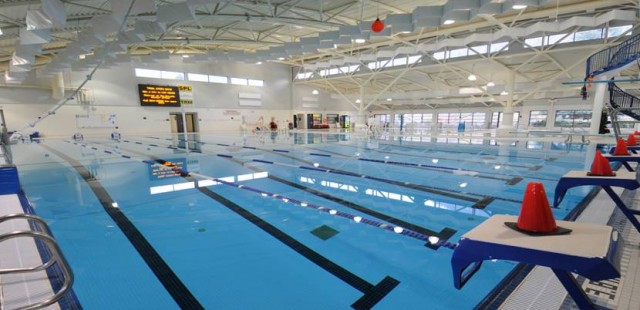The Trail Resident Card, one year on: a lose-lose-lose situation. Mission accomplished?
At last Monday’s regular council meeting in Trail, the issue of renewing the Trail Resident Program card program came up and a motion supporting the idea was passed with relatively little fanfare. Born out of the breakdown of regional recreation, the TRP card was designed as a two-tier pricing system for Trail recreation facilities. One price for basically anyone from anywhere on the face of the Earth and another for…Rossland.
As the TRP card nears its first anniversary, nearly 6,000 people (of the area’s roughly 20,000 population) have picked up a card so far, This week’s renewal of the program will allow existing TRP card holders to breathe a sigh of relief as the initial cards were set to expire in September, 2010. Had Trail council not opted for an automatic renewal it would have forced existing card holders to re-prove their residency, re-apply and be re-issued new cards. Apart from the hassle that was avoided for the public, it also saved the City of Trail over $6,000 costs associated with re-issuing the cards. Looking back at the first year of the TRP card, one might be confused at just what exactly the intended purpose of the card was, and if – whatever the reason – the program has been a success. Leaving parochialism aside let’s assume the card and program was instituted purely to help the City of Trail recoup its losses given that just Rossland is no longer contributing to the Greater Trail recreation pot. Through the deal offered by Trail and eventually accepted by Fruitvale, Montrose, Beaver Valley, Warfield and Area B, Rossland would have committed to spending $147,000 per year to participate on an equal footing with Trail residents. In that case, if Trail initiated the TRP to recoup funds, than success would be to maintain services as they were and make up the lost $147,000. While exact and specific numbers for the year are not yet available, through some educated inferences let’s examine if the program has paid off. It was noted by Trisha Davison, the acting director of Parks and Recreation in Trail, that of the 6,000 TRP cards issued last year “less than half a dozen” of them were to Rosslanders. On top of that it was noted that very few if any Rosslanders showed up to the aquatic centre volunteering to pay double the fees. To start the tally, then, let’s assume that’s roughly $6,000 recouped by Trail. That leaves roughly 15 people from Rossland using the aquatic center since last September. Now, over the past couple of years of historical data, roughly 13% of actual visitor traffic and revenue generated by the aquatic center came from Rossland residents. Working on an annual projected revenue of $1.2 million, that translates into approximately $156,000 a year in revenue at the aquatic center alone being generated by Rosslanders. Getting back to the tally, Trail recouped $6,000 from Rosslanders through the TRP Program yet through the resulting dramatic decrease in traffic to its facilities has lost roughly $156,000 in revenue at the aquatic center alone. So in a program seemingly designed to recoup $147,000 in lost contributions, Trail inadvertently gave up roughly $150,000. Add to that the cost of initial setup in the program and printing of cards and you can negate the $6,000 gained from Rossland-purchased cards as well. With no numbers to go by at this point, one can only assume the revenue loss has translated through other Trail facilities and recreation programs as well. If that were the end of the equation, one might already be scratching one’s head as to why anyone would institute a program to recoup lost dollars only to lose more than if they had done nothing at all. However, there is still more to this puzzling program. To make do without the initial $147,000 contribution from Rossland as well as the ensuing further loss of revenue caused by decreased traffic through its facilities, Trail responded by cutting the aquatic centre’s budget, which has resulted in the pool being open fewer hours than before. Prior to the TRP, the aquatic center’s full facilities were open for 108 hours a week. It was worked out that for every hour the pool was closed the facility would save $45. Naturally, from there, the open hours of the pool were dropped by 30%. Since that initial cut some hours have been re-instated with the pool now operating at 82 hours a week (a 24% reduction) and the gym open 94 hours a week (a 13% reduction). Let’s now add that service reduction into the overall equation and tally it up once more. $147 000 in lost revenue from Rossland plus a $156 000 drop in fees means that the TRP, which was seemingly designed as a way to recoup lost revenue, has now left Trail $303,000 in the hole (just factoring in the aquatic center and not all other facilities and recreation programs), caused a significant dip on the quality of life meter for 3,200 people in the region as well as reduced the recreation facilities available to its own population with significant service cuts to the aquatic center and a resultant loss of work to Trail residents employed at the facility who have been cut back in hours or let go (mainly lifeguards). One would be right to look at that and think that it sure was a lot of work, a lot of headaches and a lot of money spent only to come up with a lose-lose-lose situation for all involved. If, indeed, the purpose of the TRP was to recoup revenue losses, then Year One can be tallied up as a colossal failure. With the program having now been renewed for a second year, one has to wonder if those evaluating its success are either ignoring the numbers or if there were perhaps other motives behind the program from the start. Was it perhaps small town rural BC parochialism at work? Is Rossland merely being ‘punished’ for not accepting Trail’s ‘deal’? Is this all just hard-ball negotiating? If so, one could easily view it as a success from Trail’s perspective as Montrose, Fruitvale, Beaver Valley, Warfield and Area B all eventually accepted the deal even after many of them claimed dishonesty and unfair negotiating tactics on Trail’s part early on in the recreation stalemate. While the integrity of such a tactic could be questioned, punishing non-cooperators seems to be a tactic that, if intentional, has worked for Trail. If you punish the people long enough they’ll voice their disapproval to their own government who in turn, give in and make a bad financial decision for the city and ultimately the people get punished again. Kudos to the City of Rossland for not being pulled in to a bad deal. One can’t be entirely certain what the nature of the thinking behind the TRP was, but as we head into Year Two, we can only hope that those who make the decisions in Trail look long and hard at the realities of the situation they’ve created for themselves and the region as a whole. They may be able to walk away from the bargaining table with their pride intact, but is a politician’s ego worth hurting the lives of your constituents, neighbours, and even your own coffers to the tune of over three hundred thousand dollars? That’s a question the people of Trail will have to answer for themselves.

























